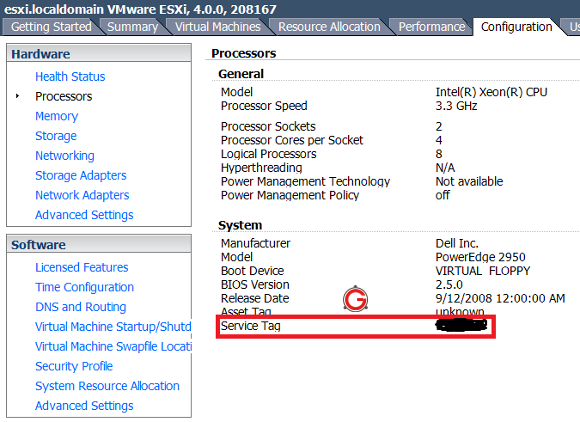Dell Server Serial Number Location
I need to call back and go through voice prompt hell again. The service tag number is the serial number. It shows on the setup screen (F2 at powerup) and is also printed on a label on the bottom of the system or inside the battery compartment. DELL - YOURS IS HERE Dell 0VX8J Hard Drive is for the Original Dell branded hard drive for optimizing your server performace. Qualcomm Hs Usb Qdloader 9008 Software. Serverpartdeals.com ensures a wide.


Thanks Nanosani! That is a new one on me and a unique tool to have. All the other methods I have seen before require writing a script or installing junk like Belarc on individual workstations. This thing lets you enter an ip address of a particular machine and reports back the tag number. I suppose there are people that will install something without thinking or reading and then are surprised but the related software it installed, but the related article points out that it is preferable to do a custom installation so you don't install the useless toolbar or change your browsers home page. All avoided with three clicks. Nice to find an interesting post about something new and different!
The wmic bios get serialnumber command call the Win32_BIOS wmi class and get the value of the SerialNumber property, which retrieves the serial number of the BIOS Chip of your system. Does not work very well on current Windows 10 machines. Achieve same goal with PowerShell For Locale computer: Get-WmiObject win32_bios For Remote computer: Get-WmiObject win32_bios -computername PC001 This will provide you with detail information about BIOS on the local/remote machine: SMBIOSVersion Manufacturer Name Serial Number So you open a command prompt CMD.EXE Then type powershell Then type the command. Get-WmiObject win32_bios For a simple configuration on a single remote machine, entering a remote Windows PowerShell session is the answer.
Digitalism Idealism Download Rar more. To enter a remote Windows PowerShell session, use the Enter-PSSession cmdlet to create an interactive remote Windows PowerShell session on a target machine. If you do not supply credentials, the remote session impersonates your current sign-in info. The following output illustrates connecting to a remote computer named dc1. When the connection is established, the Windows PowerShell prompt changes to include the name of the remote system. The Set-Location ( sl is an alias) cmdlet changes the working directory on the remote system to c:. Next, the Get-WmiObject cmdlet retrieves the BIOS information on the remote system. The Exit command exits the remote session, and the Windows PowerShell prompt returns to the default.
PS C: >Enter-PSSession -ComputerName dc1 [dc1]: PS C: Users Administrator Documents>sl c: [dc1]: PS C: >gwmi win32_bios SMBIOSBIOSVersion: A01 Manufacturer: Dell Computer Corporation Name: Default System BIOS SerialNumber: 9HQ1S21 Version: DELL - 6 [dc1]: PS C: >exit PS C: >The good thing is that when using the Windows PowerShell transcript tool via Start-Transcript, the transcript tool captures output from the remote Windows PowerShell session and output from the local session. Indeed, all commands typed appear in the transcript. The following commands illustrate beginning a transcript, entering a remote Windows PowerShell session, typing a command, exiting the session, and stopping the transcript.